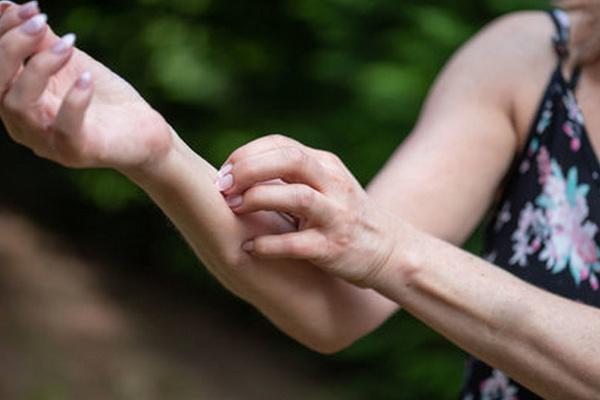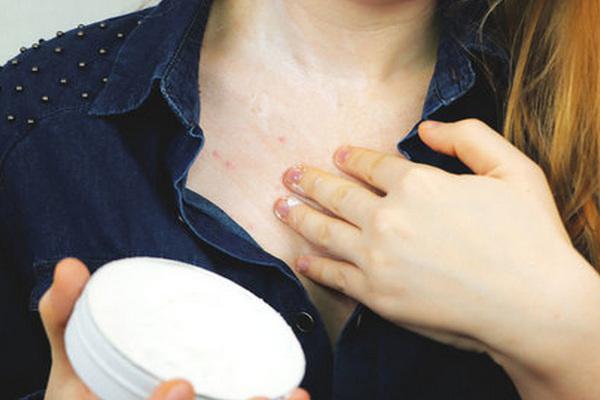Зміст
- 1 Nickel – why are so many people allergic to it?
- 2 Nickel allergy has more than one name …
- 3 Nickel allergy – risk factors
- 4 Nickel allergy – what to eat and what to avoid?
- 5 Low nickel diet – permitted and prohibited foods
- 6 What to look for in the kitchen if you are allergic to nickel?
- 7 Nickel allergy – can be detected with a simple test
- 8 Nickel allergy – why should you seek help from a nutritionist?
Nickel has one fundamental problem. We find it in soil, tap water, air, food, jewelry, as well as in many everyday objects and even in our own body! Unfortunately, nickel is also a highly allergenic element. Allergy to this metal occurs in about 17% of adults and 8% of children. Thus, it is at the top of the list of the most popular allergens. A low nickel diet is an effective way to combat nickel allergy symptoms. And that is the topic of diet that we will cover in this article.
Nickel – why are so many people allergic to it?

The main reason is the high susceptibility to this metal. The more we come into contact with nickel, the more we are allergic to it. Contrary to popular belief, nickel allergy affects not only women from childhood who wear earrings or jewelry. Although in fact in women, it occurs 4 times more often than in men. However, every day we use many other items containing this element: pots, cutlery, eyeglass frames, buttons, buckles, clasps, hairpins, pens, scissors, keys and coins. These are just a few of the many everyday items that contain nickel.
Nickel allergy has more than one name …
Nickel allergy can take different forms depending on the mechanism causing the allergic reaction. No! He can change his character over the years! How? To begin with, the main symptom of nickel allergy is skin lesions of various types – from itching, wet spots, to cracks and dry skin. It most commonly appears on the hands, but can also appear on other parts of the body such as the face, legs, or abdomen. Nickel contact can also cause conjunctivitis, rhinitis, bronchial asthma, and even abdominal symptoms such as diarrhea, flatulence and abdominal pain.
Nickel allergy – contact and food allergies
Talking about nickel, two types of allergy to this element should be distinguished – contact and food. In the first case, allergy symptoms in the form of an itchy rash appear where a nickel object (for example, a button for trousers, earrings) touches the skin. In the second case, allergy symptoms in the form of skin changes, diseases of the abdominal cavity or respiratory tract appear after eating a product containing a harmful metal. It happens that a patient first develops a contact allergy, and only then begins to react to food. In this case, we are talking about the third type of nickel allergy, the so-called generalized allergy.
Nickel allergy – risk factors
Sometimes you can forget about nickel allergy for many years and only manifest itself under the influence of some factor, for example, severe stress. Females also increase the risk of nickel allergy. And this is not only due to the fact that women are more likely to wear jewelry. Some scientific studies have reported that hormonal fluctuations associated with the menstrual cycle can also influence the intensity or decrease of symptoms. Allergy symptoms are generally weaker during ovulation and worse during menstruation. Some patients also report worsening symptoms during pregnancy or when using hormonal contraceptives.
Nickel allergy – what to eat and what to avoid?
You are probably wondering if you can just get rid of allergies? The answer is no. Of course, not so much that the illness is never remembered. There is no desensitization method. If you want to stop discomforting with nickel allergy, you need to minimize your exposure to nickel. Since nickel is found in many foods, you may need to not only ditch jewelry, but also change your eating habits. Of course, it is impossible to completely exclude nickel from the diet, because there are too many products containing it. If we tried to completely eliminate harmful metals from the menu, we would only develop severe nutritional deficiencies. This is why we are talking about a low nickel diet and not a nickel free diet.
Low nickel diet – permitted and prohibited foods
A low nickel diet is about eliminating foods containing the most harmful element from the daily menu. A person with a nickel allergy should avoid:
- oats and whole grains
- legumes (red beans, green beans, soybeans, lentils, chickpeas, peas)
- corn
- tomatoes
- tomato concentrates and ketchup
- processed cheese
- margarine
- fish: herring, mackerel, tuna, canned fish
- seafood
- sour soups cooked in metal utensils
- some fruits: cherries, pears, raspberries, canned fruits (e.g. pineapple, peach), dried fruits
- chocolate and cocoa
- marzipan
- almonds
- figs
- nuts: hazelnuts, cashews, pistachios, peanuts
- sunflower seeds
- strong coffee
- strong tea
- green tea!!!
- beer
- wine (especially red)
- nutritional supplements
Foods that are relatively safe for people with nickel allergies include:
- meat (red and poultry)
- milk
- eggs
- potatoes
- mushrooms
- green and pickled cucumbers
- pepper
- green salad (in limited quantities)
- Chinese cabbage (in limited quantities)
- onion
- apples and citrus fruits
It is worth remembering that nickel allergy is very individual. Each patient has slightly different sensitivity to certain food groups. Therefore, he has to experiment with himself to see how he reacts to certain foods.
What to look for in the kitchen if you are allergic to nickel?
Tap water is a rich source of nickel. The concentration of the harmful element in it increases overnight when it is in the pipes. Therefore, a person with a nickel allergy should not drink or prepare their morning portion of water. Ideally, the cookware in which the food is prepared should also be nickel-free. In this case, it is worth going back to traditional enamel cookware.
Nickel allergy – can be detected with a simple test
The main diagnostic tool for nickel allergy, in addition to medical history, is the so-called patch tests. The epidermal patch test is a test that detects sensitization to contact allergens. Everything is very simple. A patch containing a set of the most common contact allergens is adhered to the patient’s back. Besides nickel, it can be, for example, cobalt or chromium. After 48 hours, the patches are removed and the dermatologist assesses the presence of an allergic reaction. An allergic person may develop bubbles, pa pules or erythema of different sizes at the site of contact with the allergen. Their presence confirms sensitization to this allergen.
Nickel allergy – why should you seek help from a nutritionist?
A low nickel diet is not an easy diet. This requires avoiding many foods, unfortunately those that are considered healthy. Therefore, it is better not to enter it yourself, but under the supervision of a nutritionist who has experience in this. Only a nutritionist can draw up a meal plan in such a way that, on the one hand, it provides all the necessary nutrients, and at the same time does not aggravate the allergic reaction.
In conclusion, nickel allergy is one of the most common human allergies. It can be a contact or generalized allergy. Then an allergic reaction occurs after eating foods containing this element. The main symptom of nickel allergy is skin lesions of various origins. Rhinitis, conjunctivitis and bronchial asthma can also occur. Food allergy to nickel is treated with an elimination diet, preferably prepared by a nutritionist.








